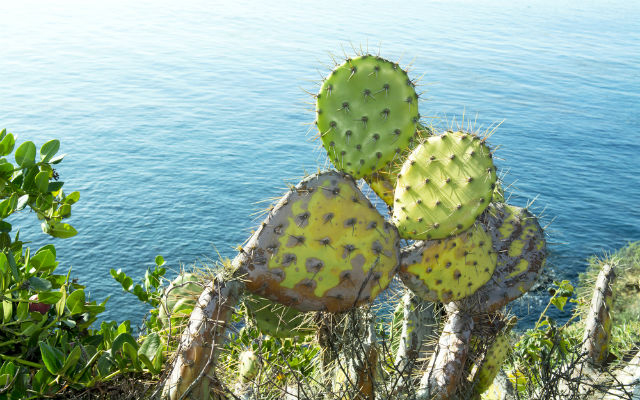Discus throwing is one of the original Olympic sports and Calabria has its own thorny version.
Nearly three thousand years ago, athletes gathered to throw a round object as far as they could as part of the founding Olympic Games. The discus was originally made of stone and later of iron, lead or bronze. Discus throwing still remains an Olympic sport, although in southern Italy, a sports enthusiast has devised a somewhat more curious version – using fichi d’India (prickly pears in the U.S.), leaves from a cactus plant found in the Mediterranean.
Each year, tourists and locals flock to a high vantage point overlooking the Mediterranean to throw the prickly pears into the sea below. This year’s event took place in Calabria, in the town of Palmi on a viewpoint overlooking the sea.
“It’s an event that appeals to adults and children,” said organizer Lillo Loiercio. “Not all the leaves are suitable for our sport; you have to select the best ones, clean them and turn them into a round disc, at which point the ‘pitta’ is ready: the winner is the one who can launch it the furthest.”
According to Loiercio, the tradition stretches back many years in Calabria. Each participant gets three throws, with the distance marked with a clothes peg on a rope. The fichi d’India leaves are completely biodegradable which makes the sport eco-friendly, although you would probably want to avoid being in the line of fire when they are thrown.
The fichi d’India, typically grow with flat, rounded branches that include a spine and prickles (these come off the plant and can penetrate underneath the skin). The pears in Calabria grow in clusters and are found throughout the countryside. Harvesting and peeling a fichi d’india is moderately difficult given the sharp needles on the tough exterior skin of the fruit. Most Calabrians devise a long implement, usually a stick with a metal can on the end, to reach for the fruit. Once the fruit is peeled, it’s red, fleshy, skin is slightly sweet and very refreshing. It is also made into jams and juices and distilled to make liqueurs.





